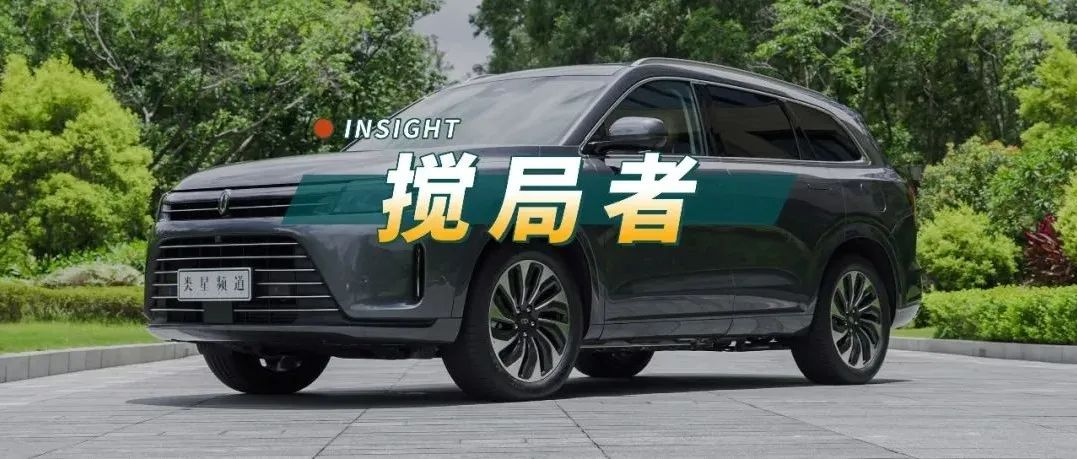Author: Song Song
Editor: Chris
Just now, the second model of the AITO automobile, the AITO M7, was officially launched, with a starting price of 3.198 to 3.798 million yuan.
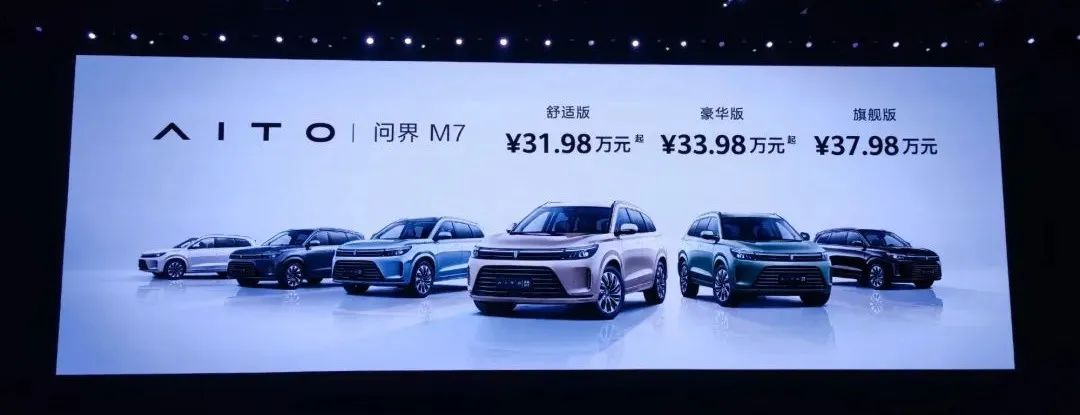
The model that Huawei’s Yu Chengdong claimed was “beyond the experience of a million-dollar luxury car, and the world’s first most comfortable and enjoyable boss’s seat, unparalleled,” how is it really? Check out the starlight channel’s static experience video, and enjoy~
In fact, since the AITO M7 debuted at the Ministry of Industry and Information Technology on April 15, my expectations for this car were not high, but after experiencing it in person, my thoughts did change somewhat.
Steady As She Goes
Let’s first take a look at some high-definition exterior pictures. It is evident that the styling of the AITO M7 is lacking in the awe-inspiring feeling that is prevalent in current futuristic, radical, and fanciful designs.

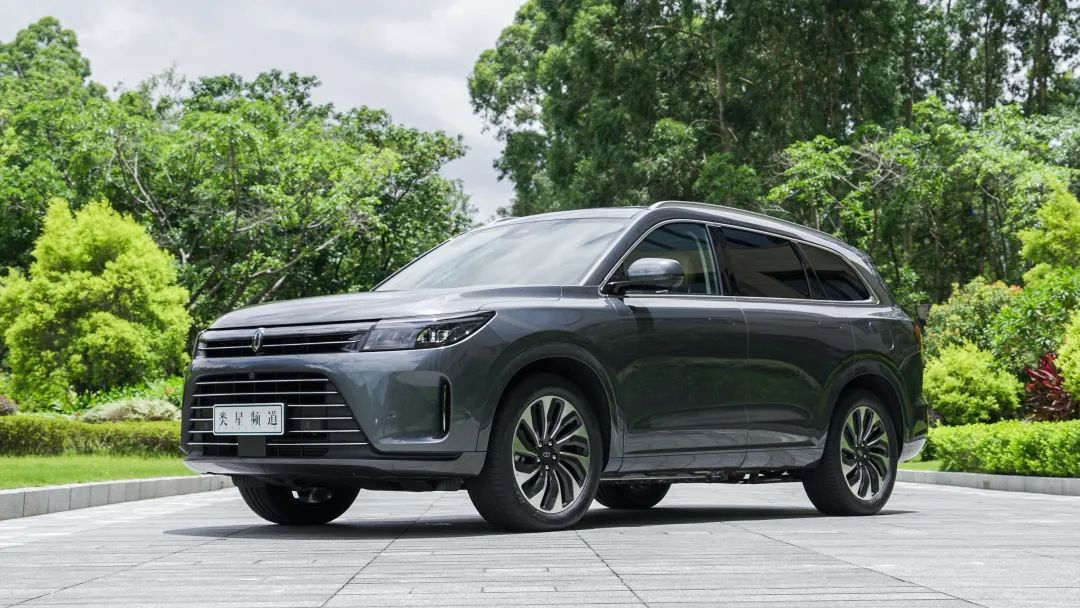
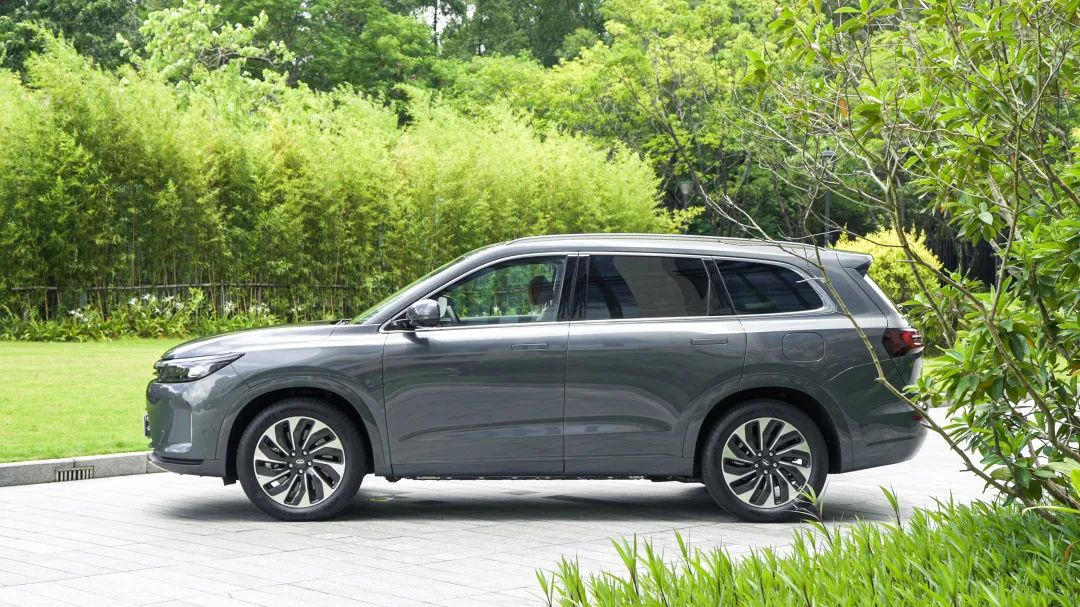
The trapezoidal grille on the front of the AITO M7, including the vertical light strips on both sides and the tail light design, can be seen to continue the family design of the AITO M5. Unlike the M5, the M7 features a continuous daytime running light and a glowing logo.
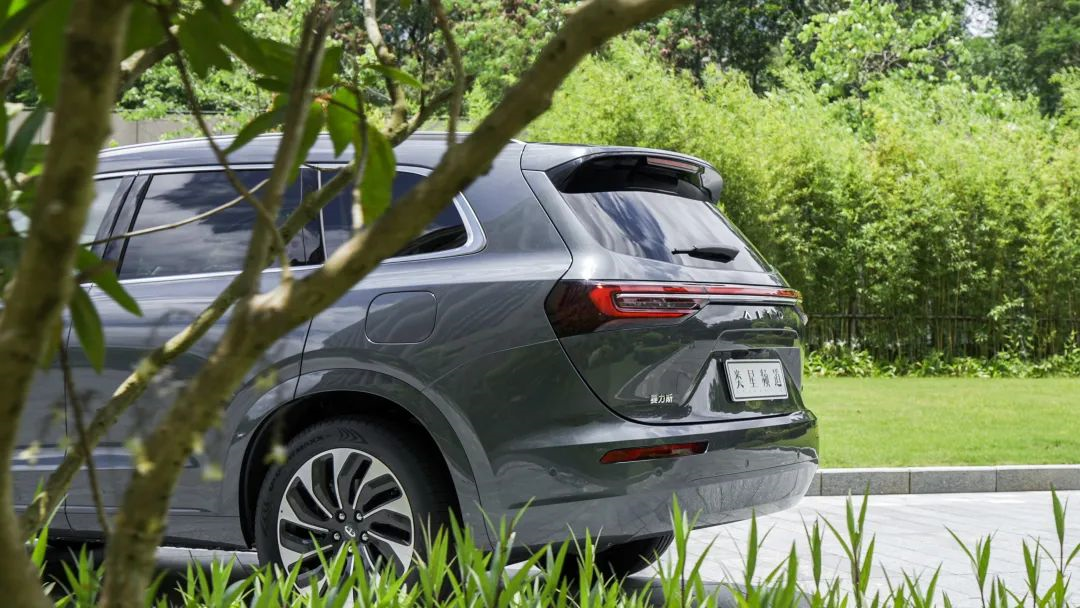
However, compared to the M5, personally I feel that the lines on the front and rear of the M7 are slightly more complex, lacking a sense of simplicity.When it comes to the looks of the Wanjie M7, you can’t help but notice the slight upward curve of the waistline, and the downward slope of the roof line, which makes the car visually appealing without looking too big, both in pictures and in person.
However, as a mid-sized SUV, the dimensions of the Wanjie M7 are actually quite large, at a massive 5020 × 1945 × 1775 mm, surpassing most mid-sized SUVs with three rows of seats, and even approaching the three-dimensional data of the LI ONE.
As observant viewers may note, the wheelbase of the Wanjie M7 is smaller, at only 2820 mm compared to other cars in the same category, which may cause concern about space performance in the third row.
Despite initial worries about third-row seating, the experience is actually much better than expected, with even an adult able to sit comfortably, even when the second row is pushed back to the limit. Additionally, the front and second rows come with ventilation, heating, and massage capabilities, as well as an optional small desk.
According to Huawei, the reason for the spacious interior is the six-in-one high-integration range extender assembly used in the front cabin, combined with the McPherson suspension, saving a lot of space in the engine compartment and shortening the distance between the front pedal and the center of the front wheel, while keeping the seat back thickness minimal to leave more room for passengers.
As a result, the total length of the front, middle, and rear rows comes to 2605 mm, a fact that may be difficult to conceptualize. To help, Huawei has provided a set of data comparison diagrams.
Furthermore, the third row seat has a six-level adjustable angle, which can be adjusted up to 33 degrees, making the overall seating position more comfortable. This is currently one of only two cars in the same category with the third row seat having such a large adjustment angle, the other being the LI ONE.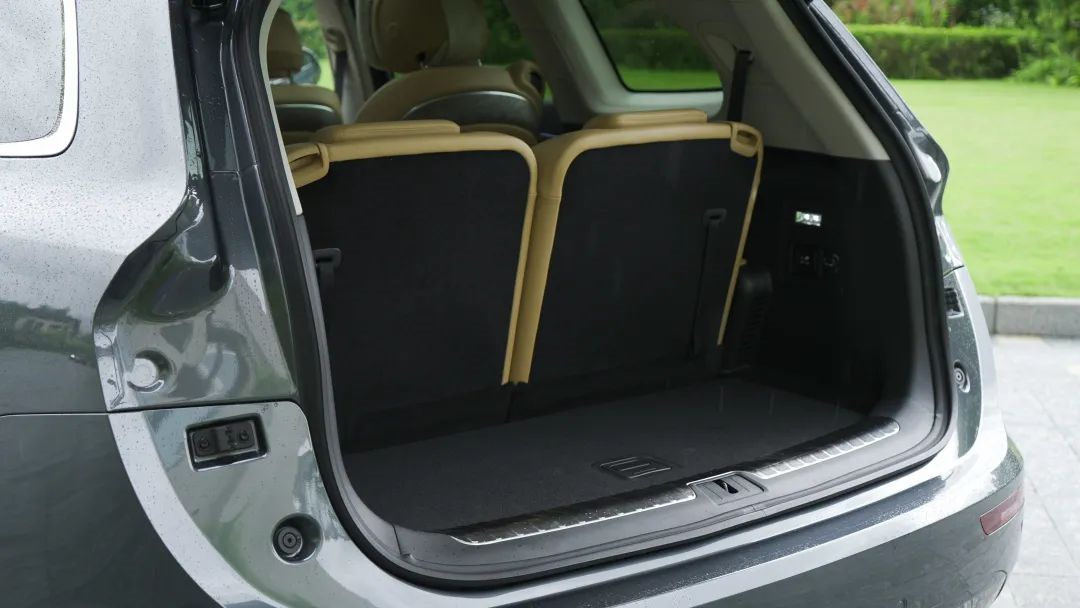
However, the trunk space of M7 is just average. Fortunately, it is equipped with a 220 V power supply and 3.5 kW external power output, which adds to its practicality.
If the third row of M7 performs well, the second row is really surprising, but it is not just about space.
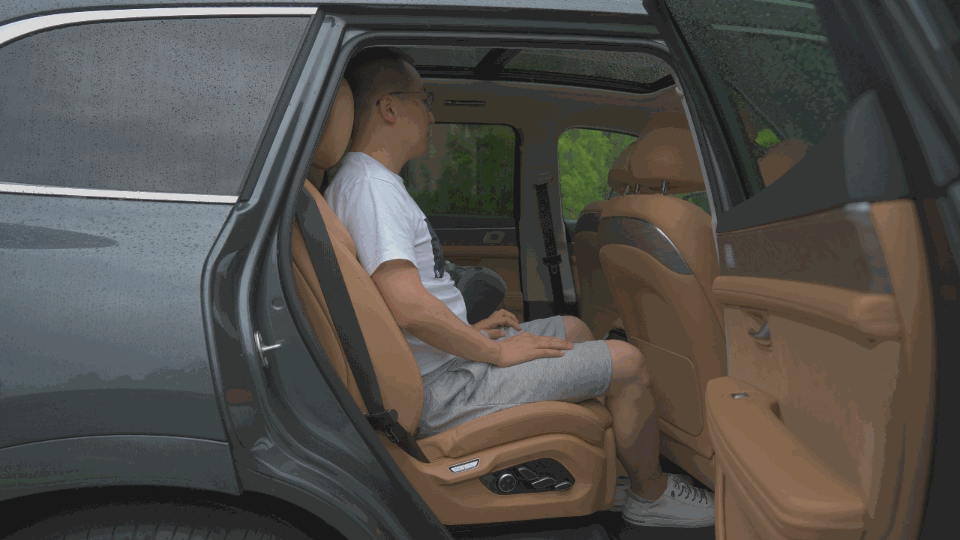
It’s about the official AITO zero-gravity seat, which looks like a “one-button recliner,” but according to the official statement, this zero-gravity seat has undergone a lot of simulation and modeling based on human anatomy and pressure distribution, and eventually the angle of 113° between the thighs and body is determined to distribute pressure on the legs, hips, and waist, instead of just one side, which is the most comfortable sitting position for humans. There is also a small detail here: in order to achieve the angle of 113°, the second-row seat cushion is raised as a whole.
In terms of actual experience, although the seats of this project car are obviously a little hard, the on-site staff also said that the foam material of the seats is still being adjusted. But even so, after pressing the zero-gravity button, it really becomes very comfortable.
Overall, although the wheelbase of the M7 is only 2820mm, the interior space performance is impressive. The second-row zero-gravity seats meet comfort needs, and the third-row seats achieve decent performance by thinning the seats and allowing up to 33° tilt.
There are regrets and highlights
In addition to slight changes to the front wireless charging board and cup holder, the overall interior design style of the M7 continues the design of the M5.
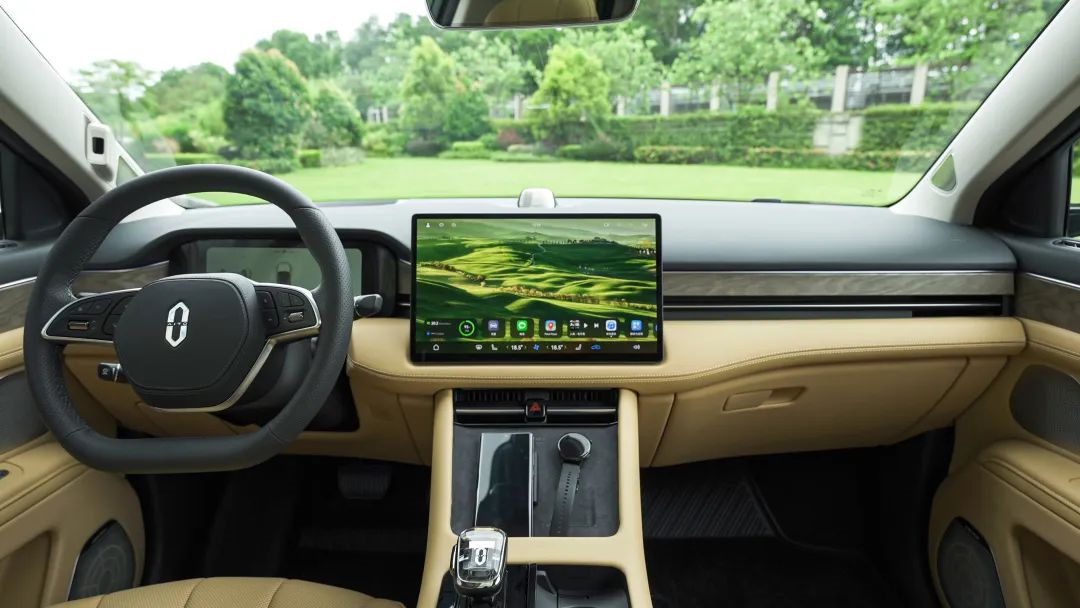
The front dual wireless charging board supports a maximum fast charging power of 40W, and the entire vehicle is equipped with 4 wired fast charging ports (2 66W, 2 18W), and even when charging multiple phones simultaneously, full power output can still be achieved without being divided.
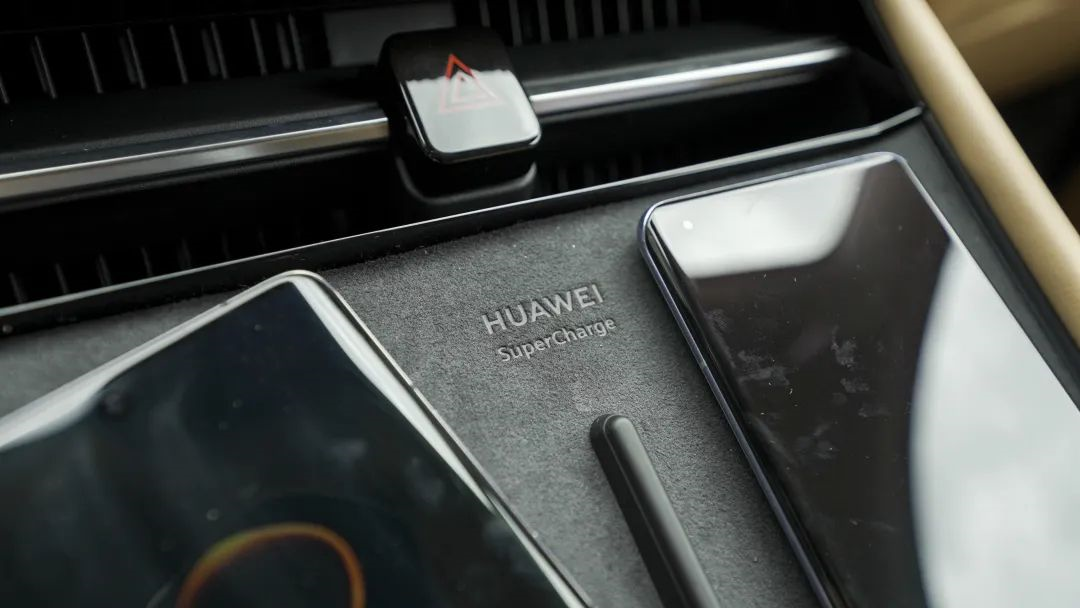 The Hongmeng cockpit is still one of the most important selling points of the Wanjie M7, consisting of a 10.4-inch central screen and a 15.6-inch 2K HDR central screen. The chip still uses the Kirin 990A, and many users have experienced the smoothness and UI & UX design of this Hongmeng cockpit, which is still among the top players in smart cockpits this year.
The Hongmeng cockpit is still one of the most important selling points of the Wanjie M7, consisting of a 10.4-inch central screen and a 15.6-inch 2K HDR central screen. The chip still uses the Kirin 990A, and many users have experienced the smoothness and UI & UX design of this Hongmeng cockpit, which is still among the top players in smart cockpits this year.
In addition, these features, including multi-tone zone voice control and speech-to-text, have also been unsurprisingly included, so we will not introduce them in detail here.
The conference also revealed several upcoming OTA features, including Super Desktop, which allows all applications supported by Harmony OS on smartphones to be directly used in the car, with applications adapting to the vehicle and supporting hardware interaction with mobile phones. Compared to other systems, this makes downloading much more convenient, and many apps may not even be available for download in the car system.
Next is the owner care mode, where the car’s air conditioning will not stop working when the car is locked. Finally, the innovative feature of the Wanjie M7 is intelligent car searching.
What does this mean? By using the driving recorder and surround-view camera in conjunction with OCR algorithms, parking information (floor/vehicle location/parking space number) is sent to the app side, making it easy for users to view a car’s location directly on their mobile devices. This feature has hardware changes, as shown in the figure below; in addition to the traditional 360-degree surround-view camera, there is also a camera that points towards the wheel hub position, making it unlikely that the Wanjie M5 will receive an OTA update.
In addition, one very important detail is that at the experience site, this M7 was pre-installed with a Babyfirst intelligent child safety seat under the Hongmeng ecosystem. With the seat connected to the power source in the armrest box, the status and settings of the seat belt, heating, ventilation, and other features can be viewed and adjusted on the central screen. Moreover, if adults need to temporarily leave the car, such as going to the restroom at a highway service area, they can continuously monitor and adjust the status of the baby seat through the app.
This means that Huawei has already connected the data transmission and control of part of its devices under the Hongmeng ecosystem with the vehicle at the system level, combined with the concept of Huawei’s Internet of Everything. I’m very excited to see what new application scenarios arise from this.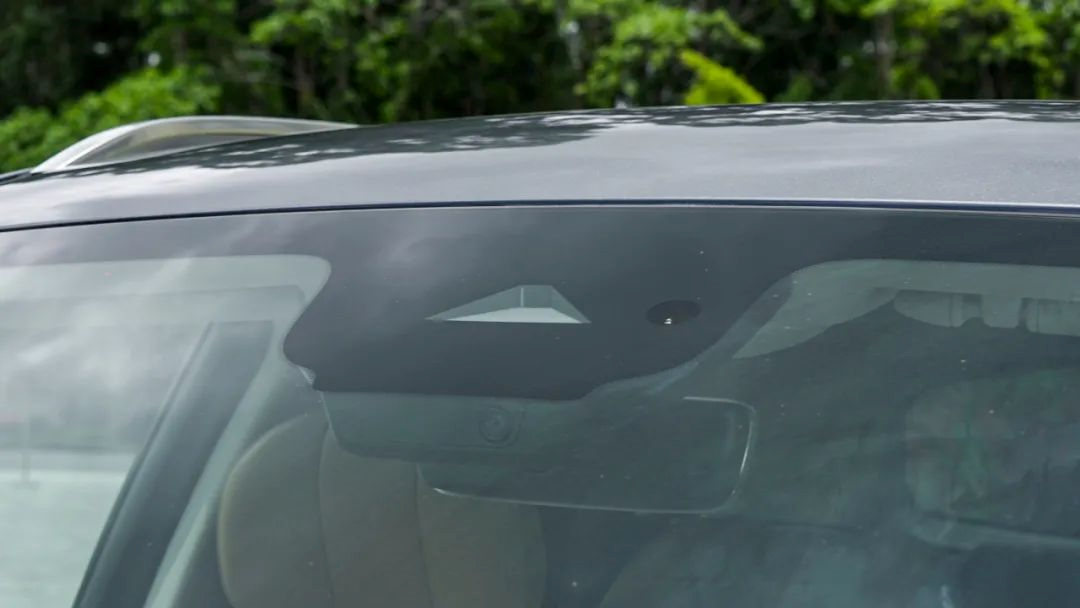
Compared with the stunning experience brought about by HarmonyOS cockpit, the assisted driving of Qingjie M7 may be the easiest to talk about among the recently launched models. After all, Qingjie M7 is based on the Bosch L2 solution with a front monocular camera, which can achieve the most basic lane keeping function. Assisted driving is definitely not its strength, but from the perspective of the press conference and the early warm-up, Huawei did not intend to use this as the selling point of M7.

The sound system is still the familiar HUAWEI SOUND, equipped with 19 speakers in the whole car (4 in the headrest), forming a 7.1 surround sound field. Later, there will be OTA ENC active noise reduction function, which eliminates the noise in the cabin through the speaker noise generated in the car.
In addition, Qingjie M7 has also adopted many physical noise reduction measures, such as double-layer laminated glass combined with noise-reducing tires, and active noise reduction technology on the range extender, which can eliminate 80% of the noise according to official data. The noise in the car is 64 decibels at a speed of 120 km/h, and the noise in the car is 35 decibels when the air conditioning is turned on at idle.
In terms of power, Qingjie M7 is also equipped with the Huawei DriveONE pure electric drive platform, using a 1.5T four-cylinder five-in-one range extender powertrain, with a battery capacity of 40.6 kWh.
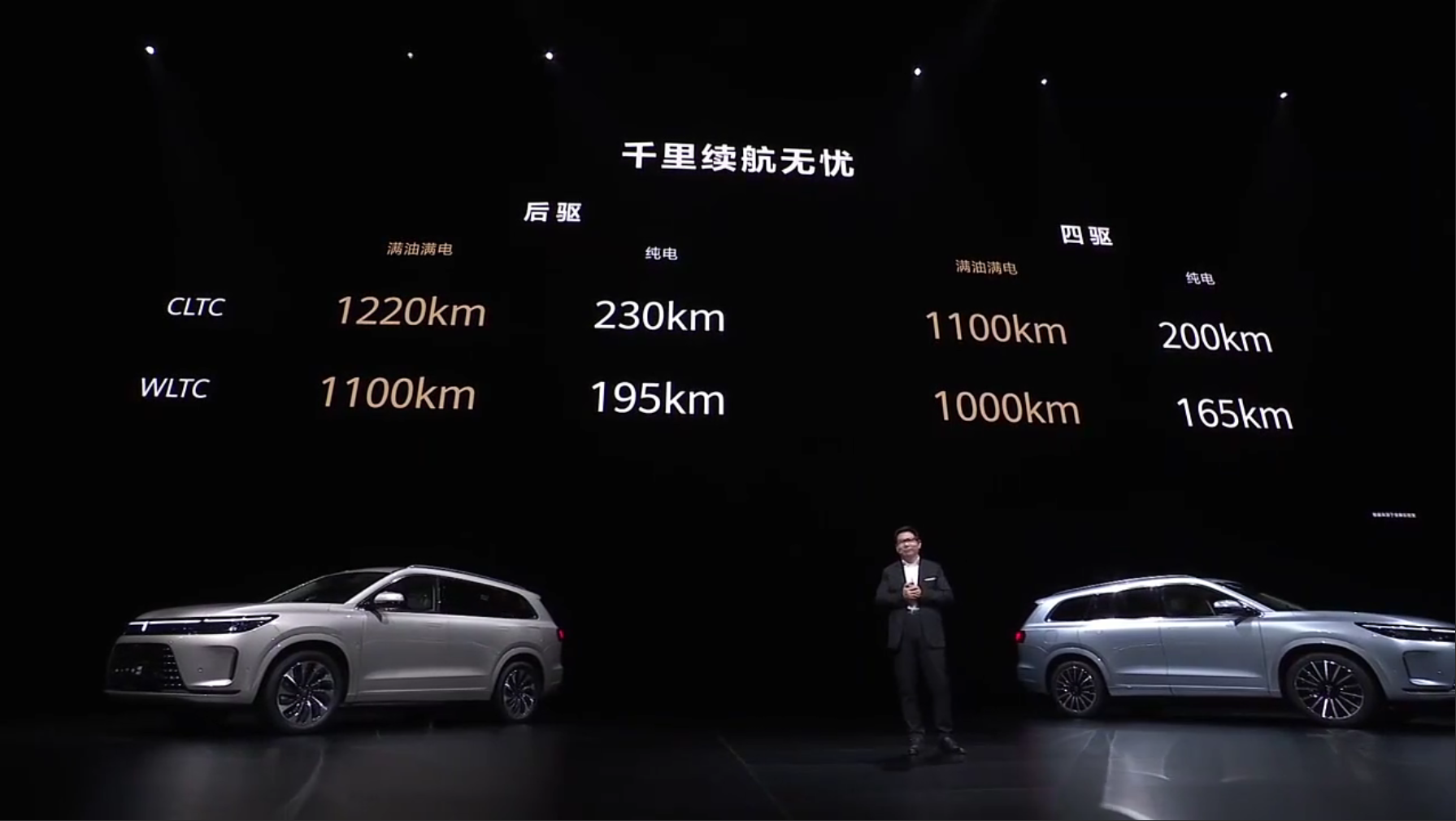
The rear-wheel-drive version is equipped with a 200 kW permanent magnet synchronous motor, which can accelerate from zero to 100 km/h in 7.8 seconds, with a pure electric range of 230 km (CLTC), a comprehensive range of 1220 km (CLTC), and a fuel consumption of 5.8 L/100 km (CLTC).
The four-wheel-drive version adds a 130 kW permanent magnet motor on the basis of the rear-wheel-drive version, totaling 330 kW, which can accelerate from zero to 100 km/h in 4.8 seconds, with a pure electric range of 200 km (CLTC), a comprehensive range of 1100 km (CLTC), and a fuel consumption of 6.3 L/100 km (CLTC).
Many people may not have a concept of CLTC working conditions. Simply put, the endurance * 0.75 and the fuel consumption/0.75 approximate to the actual performance in daily use. You can calculate it yourself.In terms of chassis, the WM Motor EX7 adopts a front MacPherson independent suspension and a rear H-type multi-link independent suspension, which is entirely reasonable given its price range that it lacks CDC and air suspension. However, according to the official statement, in order to enhance the softness of filtering bumpy road surfaces, a brand-new shock absorber spring structure has been designed and the overall tuning is biased towards daily comfort. We will give you feedback on the specific effect at the first time after test driving.
In Conclusion
Looking back at the beginning of the article, rather than saying that our initial expectation was lower than reality, I now think that our expectation was inflated by the hyperactive promotion of G9 by XPeng Motors, ET7 by NIO and L9 by Li Auto.
Or, perhaps, of the hundreds of new cars released each year, how many really give people a sense of refreshing novelty?
Apart from being too conservative in hardware and computing power stacking in smart driving, WM Motor EX7 still has a strong competitiveness in other aspects. Furthermore, the development space of the HarmonyOS system may gradually subvert our imagination.
Apart from the product level, AITO Motors has a golden signboard, and even the emerging car companies are envious of Huawei’s brand influence and channel capacity.
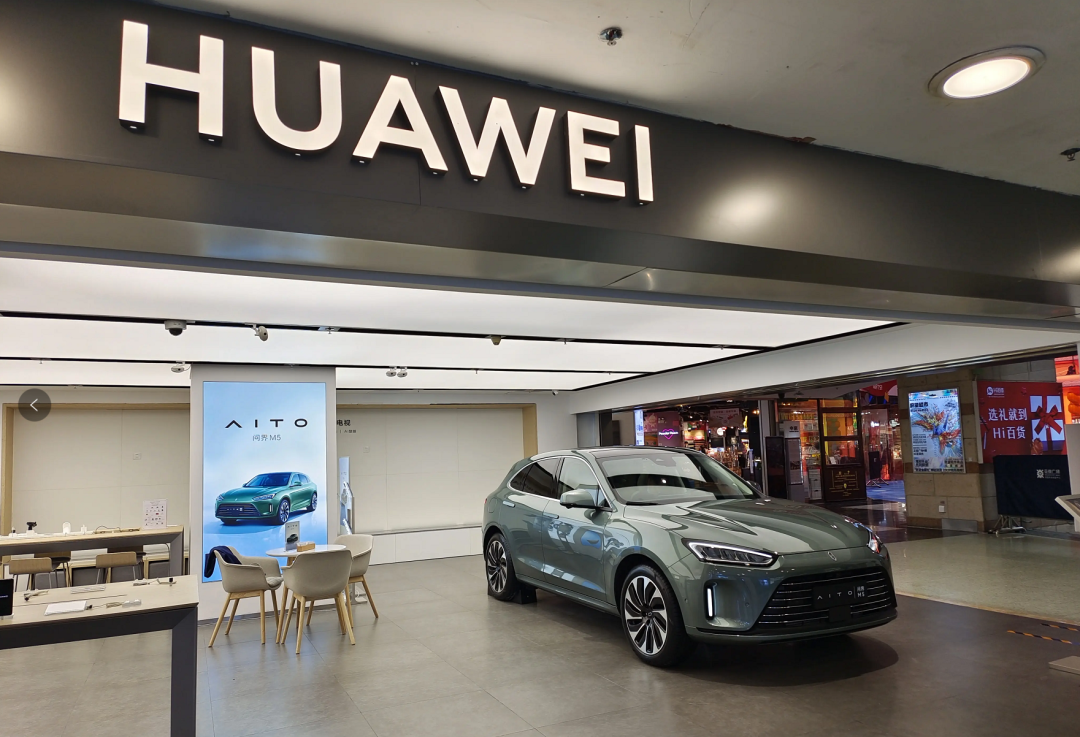
Yu Chengdong also mentioned at today’s press conference that Huawei has exceeded 600 test drive and purchase stores, covering more than 109 cities, and plans to achieve “1000+ Experience Centers” and “200+ User Centers” in 2022.
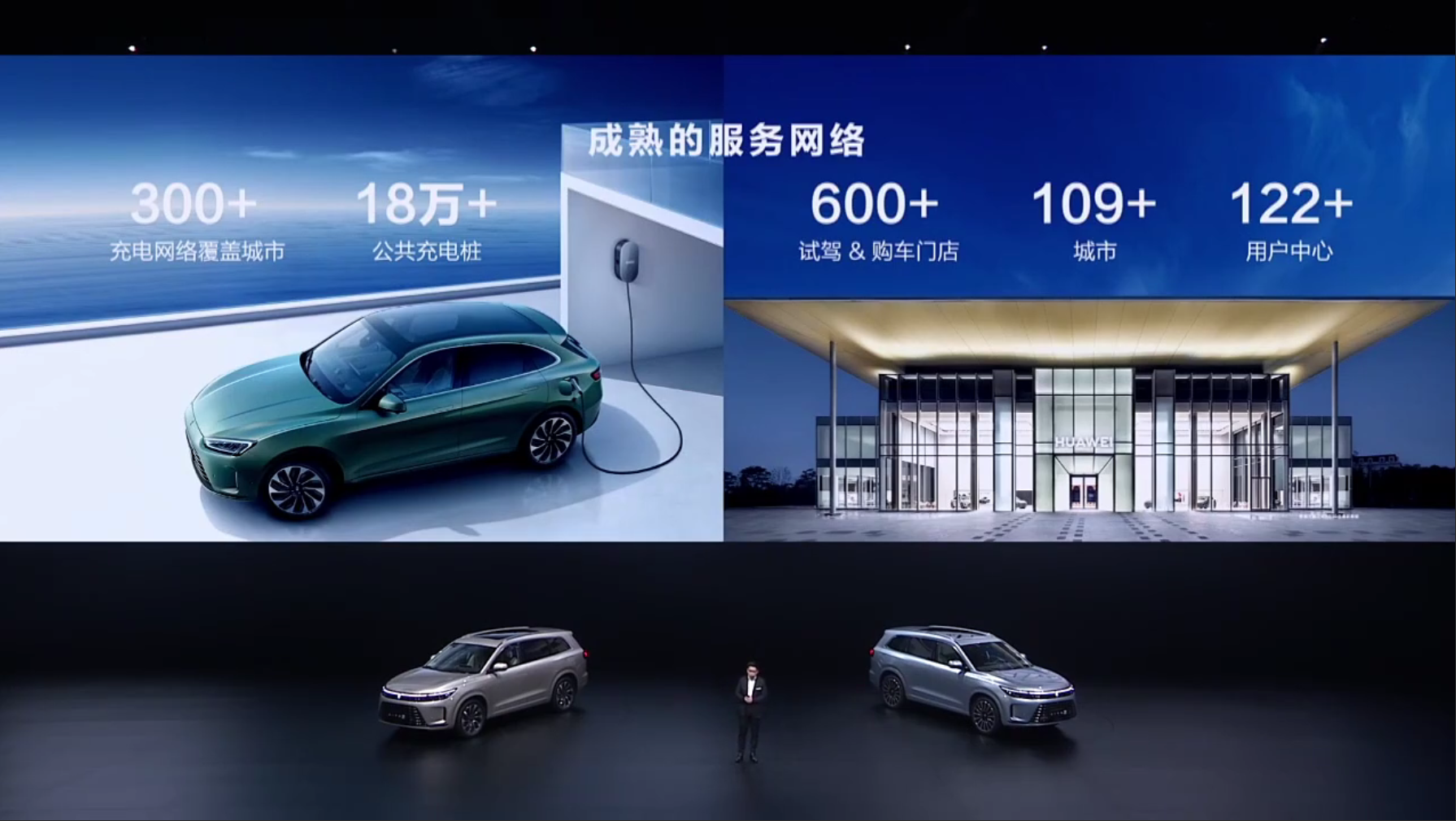
We have also summarized the number of stores and the number of cities covered by three emerging car companies, including Li Auto, NIO, and Xpeng, as of the end of the first quarter of this year.
- NIO has 381 sales stores, covering 152 cities worldwide.
- Xpeng has 366 sales stores, covering 138 cities.
- Li Auto has 217 sales stores, covering 108 cities.
Li Xiang, CEO of Li Auto, has also publicly stated: “We have found that the market share of a city with or without Li Auto stores differs by 8 times. This means that physical stores can greatly increase car sales, so we need to expand our channels.“
On the evening of June 30th, AITO Motors released a poster that the WM Motor EX5 exceeded 10,000 pre-orders in June. This also means that after the official delivery of WM Motor EX5 in March, it only took five months to achieve the level of breaking 10,000 deliveries. This is the best proof of what was said above.Since the official announcement of AITO Motors, it has only been 7 months until today when its second car, WENJIE M7, is officially released and will be delivered soon. AITO Motors is incredibly fast in terms of both car launch speed and product delivery speed, which is quite unlike a typical new car company.
As for WENJIE M7, I am not particularly concerned about its sales volume. Instead, I am more curious about which users it will eventually capture.
This article is a translation by ChatGPT of a Chinese report from 42HOW. If you have any questions about it, please email bd@42how.com.
